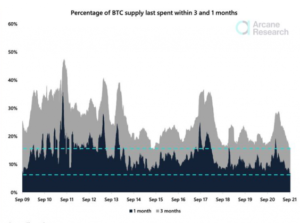Options trading can provide a meaningful addition to one’s portfolio when used in a disciplined manner. When used as a component of an overall portfolio approach, generating consistent monthly income while defining risk, leveraging a minimal amount of capital, and maximizing return on capital can be achieved. Options can enable smooth and consistent portfolio appreciation without guessing which way the market will move. An options-based portfolio can provide durability and resiliency to drive portfolio results with substantially less risk via a holistic beta-controlled manner. When engaging in options trading, specific rules must be followed, and one of the most important rules is to structure every option trade in a risk-defined (put spreads, call spreads, iron condors, etc.) manner.
PayPal (PYPL) was a recent example where the stock witnessed a massive meltdown from an ill-advised acquisition target (Pinterest) coupled with quarterly earnings that were deemed dismal. These two events culminated into a 35% slide from a 52-week high of $310 down to ~$200 post-earnings. Hence the importance of risk-defining all options trades to limit any downward stock movement beyond your protection strike. Risk-defined options trading prevents any losses beyond a specific strike price, avoids the assignment of shares, does not require a significant amount of capital, and does not potentially result in unrealized losses while soaking up capital with any share assignments.
Risk-Defined Options Trading
Risk-defined option trades are straightforward. Below is a theoretical example deploying a put spread on a stock that currently trades at $100 per share.
-
1. Sell a put at a $95 strike and collect $1 per share in premium – You take on the obligation to buy shares for $95 by the expiration date and receive $100 in option premium income.
2. Buy a put at a strike of $90 by using some of the premium received (e.g., $0.40 per share) – You have the right to sell shares at $90 a share by the expiration date.
In the above put spread scenario, premium income was $60 per contract ($1.00 – $0.40) and the maximum risk was $440 ($95 – $90 = $500 – $60 of net premium income). If the shares remain above $95 by the expiration date, then the option expires worthless, and the seller of the put spread locks in a realized gain of $60 or a return on investment of 13.6% ($60/$440). This is the essence of risk-defined options trading, where a minimal amount of capital is leveraged and return on investment is maximized.
No matter where the stock moves, losses are capped at $440 per contract even if the underlying stock falls to zero. This is the case due to the protection put leg that was purchased at the $90 strike. Therefore, in the worst-case scenario, if the stock were to fall to zero, you would be assigned shares at $95 and then sell the shares for $90 for a max loss of $5 per share less the $0.60 in premium, thus max loss of $440 per contract.
PayPal Case Study
PayPal (PYPL) experienced a dramatic fall from $296 on September 8th to ~$200 on November 10th after a two-step debacle of a mishandled acquisition target and a big earnings miss. This 32% downslide happened over the course of 8 weeks. A put spread of $245/$240 was sold on PayPal, and a near max loss was suffered. However, the $40 additional dollars per share in unrealized losses were avoided with the $240 protection strike. In a cash-covered put situation, shares would’ve been assigned at $245, and a subsequent ~20% loss would’ve been incurred. Cash-covered puts can not only be dangerous in situations like this but can also tie up substantial amounts of capital with unrealized losses. Therefore, a risk-defined put spread was essential in order to protect downside risk and avoid any capital-intensive assignment of shares.

Figure 1 – The importance of risk-defined options trades such as put spreads, call spreads, and iron condors which is the foundation of options trading – Υπηρεσία ειδοποιήσεων συναλλαγών και Εργαλείο ελέγχου επιλογών
10 κανόνες για μια στρατηγική ευέλικτων επιλογών
Μια πειθαρχημένη προσέγγιση σε ένα ευέλικτο χαρτοφυλάκιο που βασίζεται σε επιλογές είναι απαραίτητη για την πλοήγηση σε θύλακες αστάθειας και την παράκαμψη της πτώσης της αγοράς. Θα πρέπει να εφαρμοστούν μια σειρά από προστατευτικά μέτρα εάν χρησιμοποιούνται επιλογές για την επίτευξη αποτελεσμάτων χαρτοφυλακίου. Κατά την πώληση επιλογών και τη διαχείριση ενός χαρτοφυλακίου που βασίζεται σε επιλογές, είναι απαραίτητες οι ακόλουθες οδηγίες (Εικόνα 3):
-
1. Συναλλαγές σε ένα ευρύ φάσμα μη συσχετισμένων σημείων
2. Μεγιστοποίηση της ποικιλομορφίας του κλάδου
3. Διαδώστε συμβόλαια δικαιωμάτων προαίρεσης σε διάφορες ημερομηνίες λήξης
4. Επιλογές πώλησης σε περιβάλλοντα υψηλής υπονοούμενης μεταβλητότητας
5. Διαχειριστείτε τις κερδοφόρες συναλλαγές
6. Χρησιμοποιήστε συναλλαγές καθορισμένου κινδύνου
7. Διατηρεί ένα ~50% επίπεδο μετρητών
8. Μεγιστοποιήστε τον αριθμό των συναλλαγών, ώστε οι πιθανότητες να ανταποκρίνονται στα αναμενόμενα αποτελέσματα
9. Τοποθετήστε την πιθανότητα επιτυχίας υπέρ σας (δέλτα)
10. Κατάλληλο μέγεθος θέσης/κατανομή συναλλαγών
Συμπέρασμα
An options-based portfolio can provide durability and resiliency to drive portfolio results with substantially less risk via a holistic beta-controlled manner. When engaging in options trading, specific rules must be followed, and one of the most important rules is to structure every option trade in a risk-defined (put spreads, call spreads, iron condors, etc.) manner. Therefore, a beta-controlled, options-based strategy is key, and the market meltdown in September reinforces why appropriate risk management is essential. An options-based approach provides a margin of safety while circumventing drastic market moves while containing portfolio volatility.
PayPal (PYPL) was a recent example where the stock witnessed a massive meltdown from an ill-advised acquisition target coupled with poor quarterly earnings. These two events culminated into a 35% slide from a 52-week high of $310 down to ~$200 post-earnings. Hence the importance of risk-defining all options trades to limit any downward stock movement beyond your protection strike. Risk-defined options trading prevents any losses beyond a specific strike price, avoids the assignment of shares, does not require a significant amount of capital, and does not potentially result in unrealized losses while tying up large sums of capital with share assignments.
Νώε Kiedrowski
Συντελεστής INO.com
Γνωστοποίηση: Η Stock Options Dad LLC είναι μια εταιρεία εγγεγραμμένης παροχής συμβουλών επενδύσεων (RIA) που ειδικεύεται σε υπηρεσίες και εκπαίδευση που βασίζονται σε επιλογές. Δεν υπάρχουν επιχειρηματικές σχέσεις με εταιρείες που αναφέρονται σε αυτό το άρθρο. Αυτό το άρθρο αντικατοπτρίζει τις απόψεις της RIA. Αυτό το άρθρο δεν προορίζεται να αποτελέσει σύσταση για αγορά ή πώληση οποιασδήποτε μετοχής ή ETF που αναφέρεται. Ο συγγραφέας ενθαρρύνει όλους τους επενδυτές να διεξάγουν τη δική τους έρευνα και τη δέουσα επιμέλεια πριν επενδύσουν ή προβούν σε οποιεσδήποτε ενέργειες στη διαπραγμάτευση δικαιωμάτων προαίρεσης. Μη διστάσετε να σχολιάσετε και να δώσετε σχόλια. ο συγγραφέας εκτιμά όλες τις απαντήσεις. Ο συγγραφέας είναι ο ιδρυτής και Διευθύνων Σύμβουλος της εταιρείας Stock Options Dad LLC – A Registered Investment Advising (RIA) www.stockoptionsdad.com τον καθορισμό του κινδύνου, τη μόχλευση ενός ελάχιστου ποσού κεφαλαίου και τη μεγιστοποίηση της απόδοσης της επένδυσης. Για πιο ελκυστικό περιεχόμενο που βασίζεται σε επιλογές μικρής διάρκειας, επισκεφτείτε το Stock Options Dad LLC's YouTube Κανάλι. Παρακαλώ κατευθύνετε όλα τα ερωτήματα στο [προστασία μέσω email]. Ο συγγραφέας κατέχει μετοχές των AAPL, AMZN, DIA, GOOGL, JPM, MSFT, QQQ, SPY και USO.
Source: https://www.ino.com/blog/2021/11/paypal-importance-of-risk-defined-option-trading/
- "
- απόκτηση
- Πρόσθετος
- Όλα
- κατανομή
- άρθρο
- επιχείρηση
- αγορά
- κλήση
- κεφάλαιο
- Μετρητά
- Εταιρείες
- συστατικό
- περιεχόμενο
- σύμβαση
- συμβάσεις
- Δέλτα
- επιμέλεια
- δολάρια
- Κέρδη
- Εκπαίδευση
- κ.λπ.
- ETF
- εκδηλώσεις
- Εικόνα
- Εταιρεία
- Θεμέλιο
- ιδρυτής
- Δωρεάν
- κατευθυντήριων γραμμών
- Ψηλά
- HTTPS
- Εισόδημα
- επενδύοντας
- επένδυση
- Επενδυτές
- Κλειδί
- large
- LLC
- Κλειδαριές
- διαχείριση
- αγορά
- Meltdown
- μετακινήσετε
- κινήσεις
- Κοντά
- καθαρά
- κοινοποίηση
- Απόψεις
- Επιλογή
- Επιλογές
- τάξη
- PayPal
- Δοκιμάστε να παίξετε
- φτωχός
- χαρτοφυλάκιο
- Ανώτερο
- τιμή
- προστασία
- προστασία
- Προστατευτικός
- Σχέσεις
- έρευνα
- Αποτελέσματα
- Κίνδυνος
- διαχείριση των κινδύνων
- κανόνες
- Ασφάλεια
- πωλούν
- Υπηρεσίες
- Κοινοποίηση
- Μερίδια
- So
- πωλούνται
- διάδοση
- στοκ
- Στρατηγική
- επιτυχία
- στόχος
- ΓΡΑΒΑΤΑ
- εμπόριο
- συναλλαγές
- Διαπραγμάτευσης
- Μεταβλητότητα
- YouTube
- μηδέν



